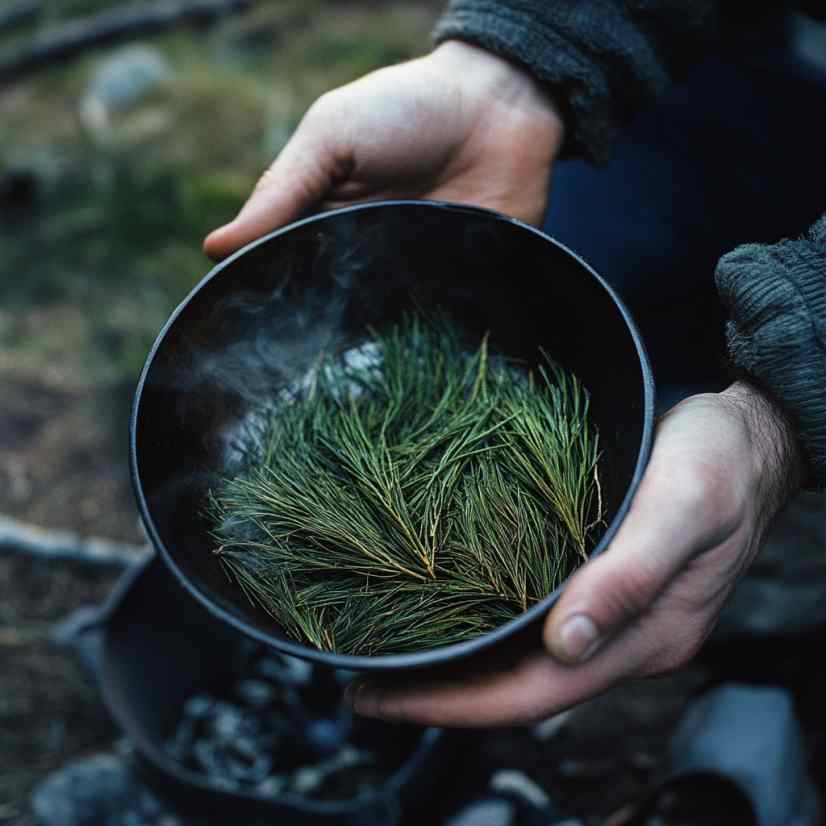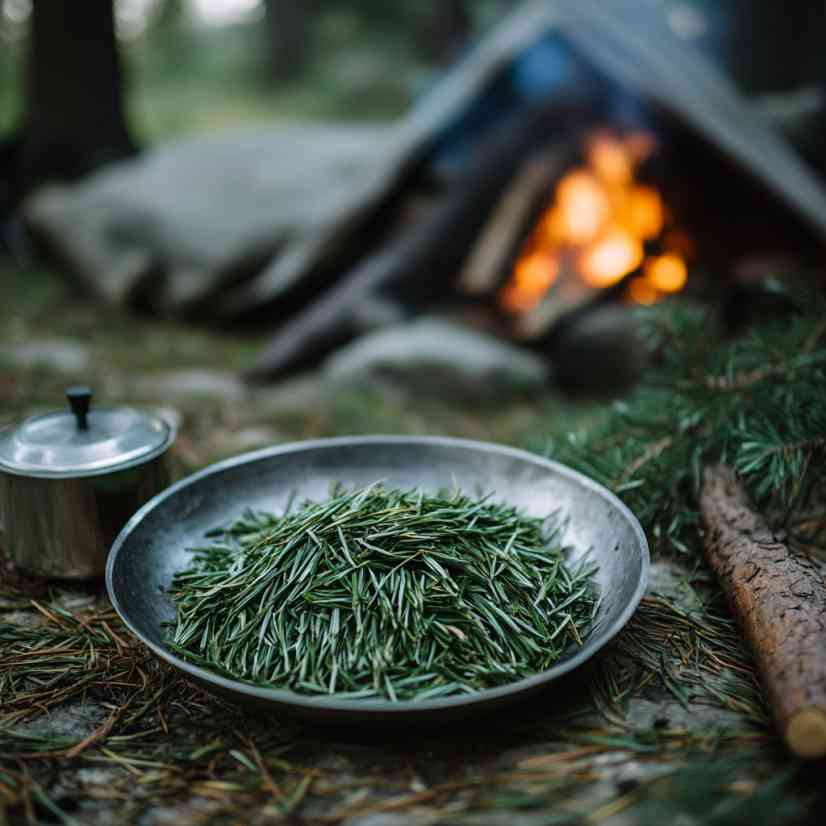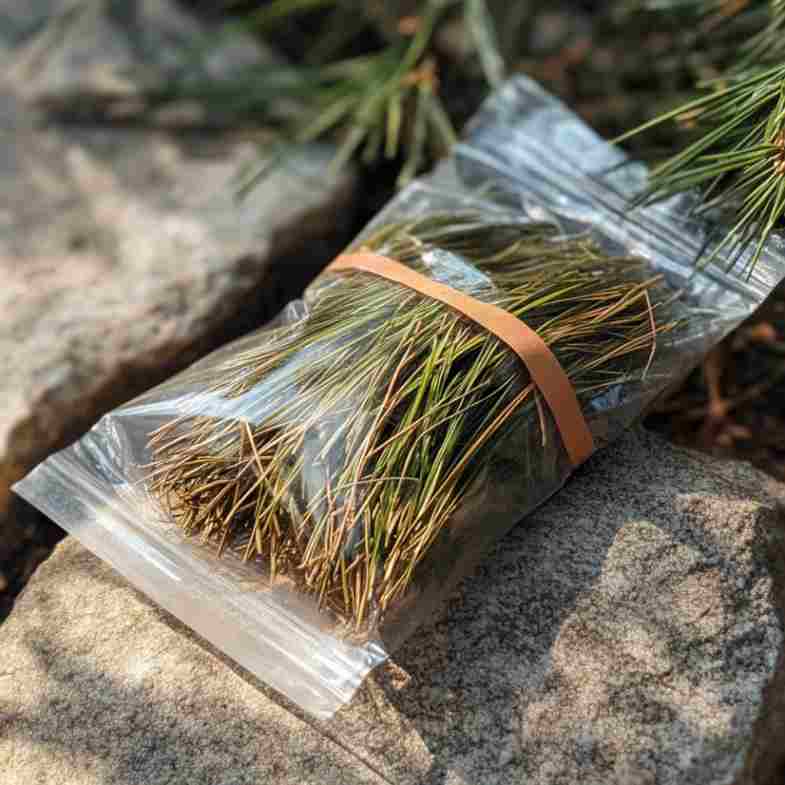How to Make Pine Needle Tea

Make sure to like Living Green and Frugally on Facebook, Shop at Amazon to help support my site and explore our PINTEREST BOARDS for innovative ways you can become self-sufficient.
Nature has always provided us with resources to nourish, heal, and sustain. Pine needle tea, a warm, earthy infusion made from fresh pine needles, is one of these gifts. This tea is a favorite among outdoor enthusiasts, herbalists, and wellness seekers, known for its invigorating aroma, subtle flavor, and health benefits.
Packed with Vitamin C, pine needle tea has a rich history rooted in indigenous and traditional practices, offering immune support and providing a natural energy boost. In this guide, we’ll dive into how to make this delicious tea, discuss the benefits of drinking it, share some helpful tips, and answer common questions.
Benefits and Uses of Pine Needle Tea
Pine needle tea isn’t just a warming, pleasant drink; it’s also a powerful source of nutrients:
- Rich in Vitamin C: Pine needles contain a significant amount of Vitamin C, which supports immune health, helps fight off colds, and reduces oxidative stress.
- Antioxidants: Along with Vitamin C, pine needles are packed with antioxidants that help protect your cells from damage.
- Respiratory Health: Pine needle tea has traditionally been used to relieve respiratory conditions like coughs, colds, and congestion.
- Energy and Mental Clarity: The tea contains compounds that can enhance alertness and offer a natural energy boost without caffeine.
- Anti-inflammatory Properties: Pine needles have anti-inflammatory compounds that can assist in reducing joint pain and overall inflammation.

How to Make Pine Needle Tea
Making pine needle tea is straightforward and requires only a few ingredients and steps.
What You’ll Need
- Fresh pine needles (from a safe, edible pine variety like Eastern White Pine or Douglas Fir)
- Water
- Honey or lemon (optional for flavor)
Instructions
- Identify and Harvest Pine Needles:
- Choose young, fresh, green needles from a safe, non-toxic variety of pine. It’s essential to avoid species like Ponderosa Pine, Lodgepole Pine, and Yew, which can be toxic if ingested.
- Once you’ve identified the tree, gently pluck the needles, ideally picking the freshest ones.
- Rinse and Prepare:
- Rinse the pine needles under cold water to remove any dirt or debris.
- Trim off the brown ends, and cut the needles into smaller pieces to release more flavor and nutrients.
- Boil the Water:
- Bring water to a boil, then let it cool slightly. Boiling water directly on pine needles may reduce some of the tea’s beneficial properties.
- Steep the Needles:
- Place about 1 tablespoon of chopped pine needles per cup of water into a heat-safe cup or teapot.
- Pour the hot (but not boiling) water over the needles and let them steep for about 10-15 minutes.
- Strain and Enjoy:
- Strain the tea to remove the pine needles.
- If desired, add honey or a slice of lemon to enhance the flavor.

Tips for the Perfect Pine Needle Tea
- Choosing Pine Trees Carefully: Only certain pine species are safe for consumption, so avoid toxic varieties such as Yew, Ponderosa, and Lodgepole Pine.
- Foraged Freshness: Fresh pine needles have the best flavor and nutrient content, so try to use recently harvested needles for the best results.
- Slightly Cooling the Water: Pouring boiling water directly over the needles can diminish the potency of the Vitamin C. Slightly cooled water retains more nutrients.
- Experiment with Flavors: Pine needle tea pairs well with ingredients like lemon, ginger, and cinnamon. Don’t be afraid to try combinations to suit your taste.
Frequently Asked Questions About Pine Needle Tea
1. What does pine needle tea taste like?
Pine needle tea has a light, refreshing, and slightly tangy flavor with a subtle piney aftertaste. It’s often described as having a hint of citrus, especially when fresh needles are used.
2. Are there any side effects of drinking pine needle tea?
Generally, pine needle tea is safe to drink, but some people may experience mild allergic reactions. Avoid drinking large quantities, as moderation is key. Also, pregnant or breastfeeding individuals should consult with a healthcare provider before consuming it.
3. How often can I drink pine needle tea?
Pine needle tea can be consumed daily, but due to its potency, many people prefer to drink it a few times a week.
4. Can I store pine needle tea?
Pine needle tea is best consumed fresh, but you can store it in the refrigerator for up to 2 days. Reheat gently before drinking, as high temperatures may reduce its nutrient levels.
5. Are all pine trees safe for making tea?
Not all pine trees are safe to use for tea. Varieties like Eastern White Pine and Douglas Fir are generally safe, but toxic types such as Ponderosa Pine and Yew should be avoided. Always positively identify a tree before using it in any recipe.

6. Can I use dried pine needles instead of fresh?
Yes, dried pine needles can be used, though fresh ones yield a more vibrant flavor and retain more nutrients. If you’re using dried pine needles, increase the steeping time to fully extract the flavors.
Final Thoughts
Whether you’re sipping pine needle tea to fend off a cold, boost your immune system, or simply enjoy a cup of nature’s goodness, this humble infusion has a lot to offer. Making pine needle tea is easy, inexpensive, and an excellent way to bring a bit of the forest’s health benefits into your home. With each cup, you’re tasting a part of nature’s pharmacy—simple, potent, and refreshing. Enjoy!